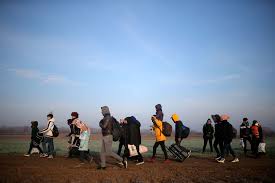
India, once heralded for providing shelter to those facing persecution, is now changing its approach towards managing refugees quite drastically. While the country has often served as a haven for multiple communities, recent actions point towards a modification of policies that could spell disaster for refugees and asylum seekers. This article aims to understand the reasoning behind the transformation of India’s approach towards refugees, look at particular policy changes, and evaluate the possible repercussions in humanitarian terms.
Historical Background: India’s Heritage of Shelter
India’s history does provides us with some hope in the form of the country being an asylum for myriad people. The country’s motto ‘Vasudhaiva Kutumbakam’ which translates to worlds is one family captures Indias essense beautifully. However, this timeline of compassion and mercy has been deviated due to political and security changes.
OpIndia
What Led to The Changes
Security Issues
India shares very loose border security with neighboring countries like Bangladesh and Myanmar. This has caused hostile perceptions from an India’s point of view. The rising numbers of refugees are often linked to inadequate border policy and loosed borders, which in turn pose real security risks.
Recent Developments in Policies
The Deportation of Rohingya Refugees
In a historic shift, the Supreme Court of India ruled that the right to reside in the country is only afforded to Indian citizens, upholding a decision to deport Rohingya Muslim migrants from Delhi. This highlights the steps being taken by the administration with regard to illegal immigration, as well as the strong resolve to defend national frontiers.
Sindhi Refugee Amnesty Scheme
Exceptional to the predominant trend, the Sindhi women’s associations granted an amnesty scheme offering concessionary rates on land conversion to refugees. The scheme allows refugees to change leasehold interests to freehold by paying only 2.5% of Ready Reckoner Rate for residential and 5% for commercial properties. This decision has been praised for assisting refugees, but viewed unfavorably for allegedly disadvantaging Indian citizens.
The 1951 Refugee Convention Non Ratification
Like many other treaties, India has steered clear of the 1951 UN Refugee Convention, which serves as a principal legal instrument defining a refugee and their rights. Not ratifying these treaties means that India does not have specific obligations which allows greater flexibility for the government tailor policies concerning refugees.
Humanitarian Aspects
Statelessness and Legal Ambiguity
The limitation of opportunities for immigrants has increased the statelessness of specific groups. These individuals are legally recognized which means they do not have any rights endorsed to them like the possibility to receive healthcare, attend school, have access to jobs and many other activities that require identification. This form of vulnerability is isolated and worsens their marginalization.
Social Integration Difficulties
Integrating into the host societies is one of the most important problems that the refugees come across. These hurdles may also result from the differences of culture, and languages alongside the discrimination they face. Due to self-confinement, their recognition is not formal which also adds to their ability to make social networks and becomes a member of a society.
Access to Core Services
Their inability to acquire primary documents like identification makes it impossible for refugees to receive essential resources like healthcare and education. This, sadly, not only lowers the quality of life for the specific group of people, but also lowers the worth a nation.
